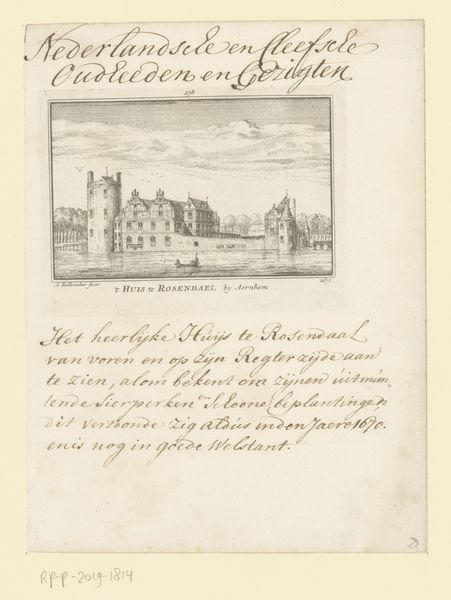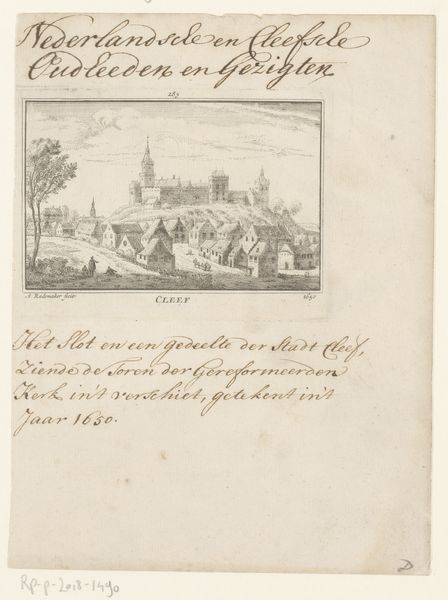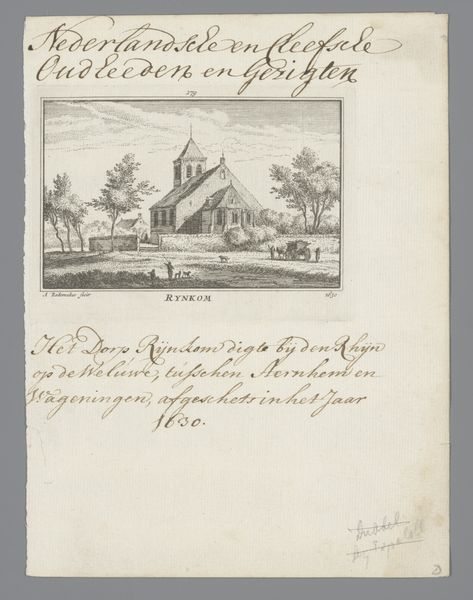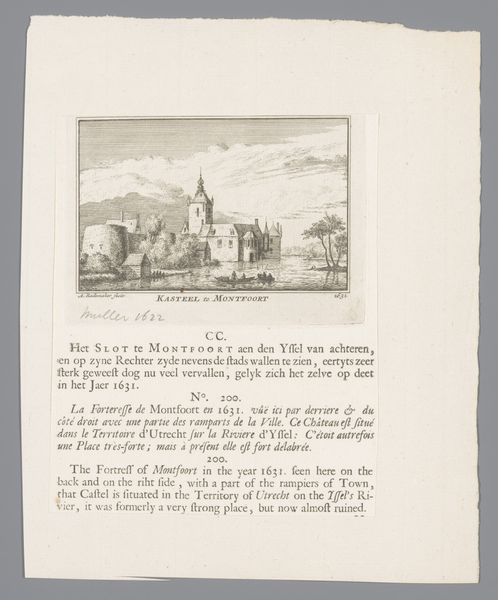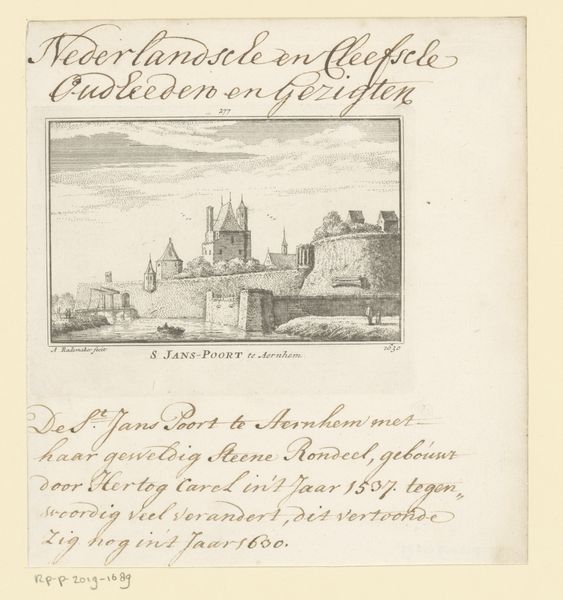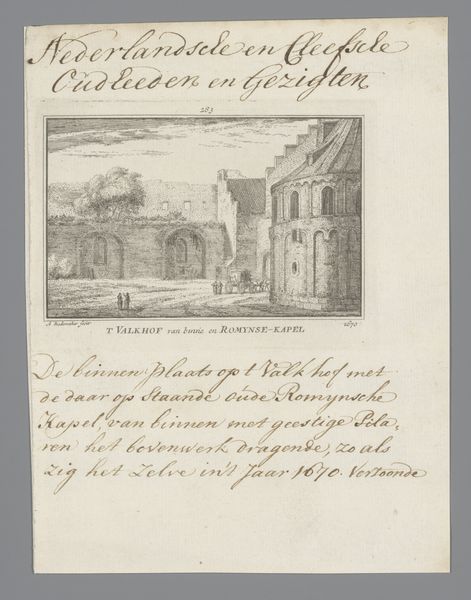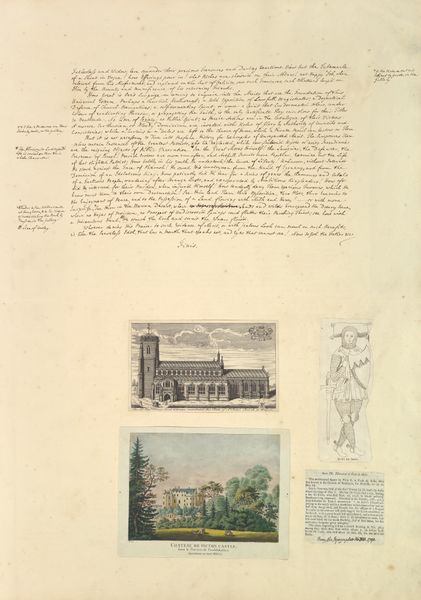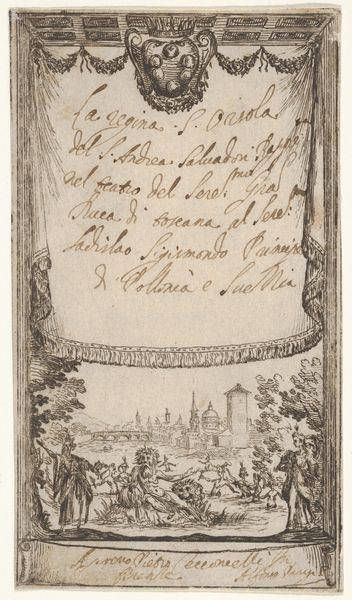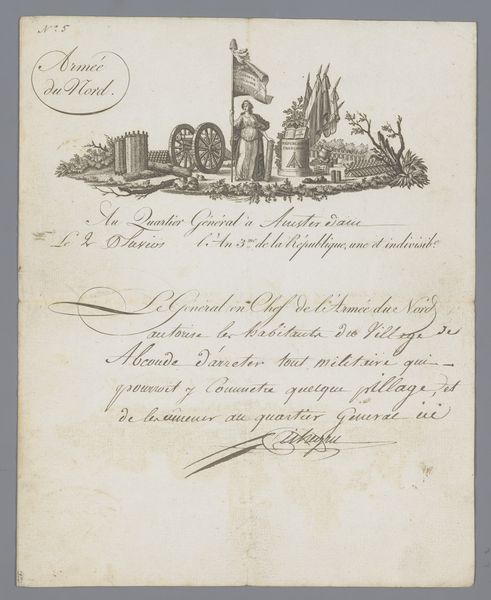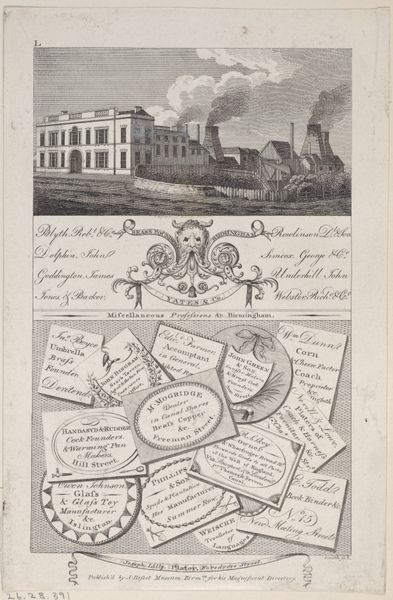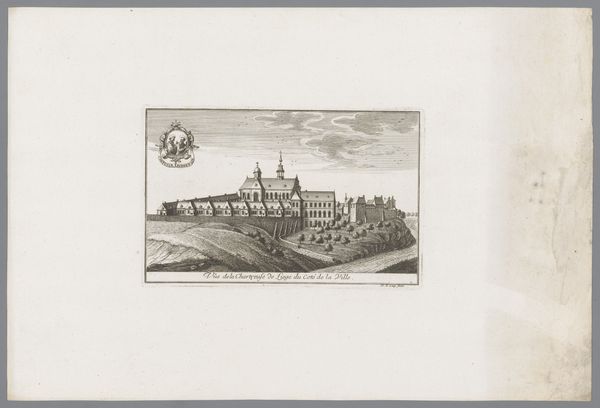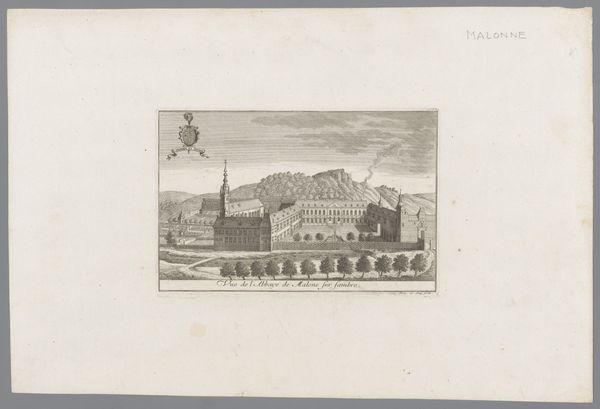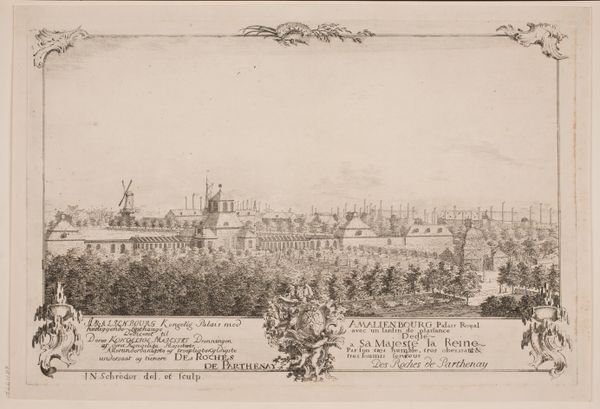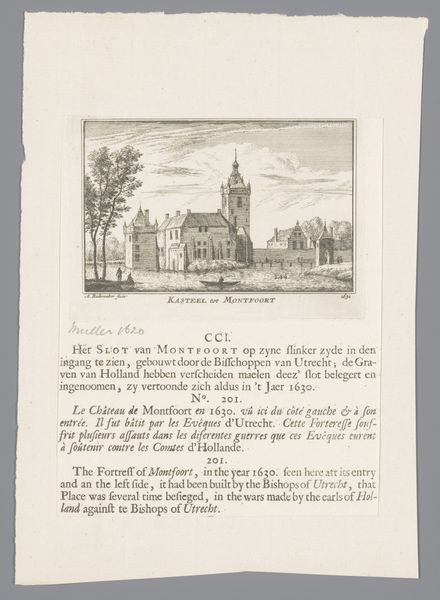
print, etching, architecture
#
baroque
#
dutch-golden-age
# print
#
etching
#
landscape
#
architecture
Dimensions: height 83 mm, width 115 mm
Copyright: Rijks Museum: Open Domain
Curator: This is an etching by Abraham Rademaker, titled "Kasteel Middelaar," created between 1727 and 1733. It offers a view of Middelaar Castle. Editor: It has a distinctly picturesque quality, doesn’t it? The castle seems solid yet somehow ethereal, softened by the light and the surrounding landscape. The delicate etching strokes lend a certain charm to the structure, like a fleeting dream. Curator: Rademaker produced numerous topographical prints depicting castles and landscapes. This print and others served to visually document these sites at a time when such records were increasingly valued as symbols of regional identity and power. Prints like these also circulated amongst collectors interested in historical records and the burgeoning concept of national heritage. Editor: Note how the lines converge to establish a point of view that places emphasis on the architectural details. Consider the varying texture to differentiate stone from foliage, adding depth to what could otherwise be a flat illustration. This careful handling creates a fascinating interplay of line and shadow. Curator: The print appeared within a larger project titled "Nederlandse Oudheden," or "Netherlandish Antiquities," highlighting its purpose: to inventory and preserve representations of notable places across the Netherlands. Rademaker’s work thus became part of a larger cultural movement aimed at defining Dutchness through its landmarks. The choice of etching was practical—it allowed for mass production and broad distribution. Editor: What also strikes me is how he's managed to give the entire scene a muted tone, relying on subtle tonal gradations, contributing to its slightly melancholic, romantic atmosphere. Note the strategic use of open space, especially the expanse of sky. It contributes to the dreamlike and subdued emotion of the print. Curator: Indeed. The "Kasteel Middelaar" etching goes beyond simply depicting a building; it speaks volumes about historical consciousness and artistic agency in representing national identity in the early 18th century. Editor: Yes, seeing it now through the lens of its historical intent as well as appreciating the delicate rendering definitely enriches my view of this castle vista.
Comments
No comments
Be the first to comment and join the conversation on the ultimate creative platform.
